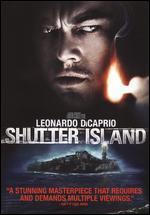Research
Thriller is a genre of films or texts that uses tension, suspense and excitement to keep the audience on the edge of their seats. Thrillers are usually very fast paced and include chase scenes, and are designed to create feelings of anxt, fear and anticipation. During the film, the protagonist is set against a problem in the form of a daring escape, a mission or a mystery, which is caused by the antagonist, which is usually the protagonists arch enemy. The tension increases through the film, and reaches a climax at the end of the film. A good example of a thriller series is the Jason Bourne trilogy.
Generic conventions of thrillers:
- Drama- makes the film interesting and captivates the audience
- Danger- grips the audience and creates tension and suspense
- Fast paced editing- builds the tension
- Suspicion- leaves the audience asking questions
- Mystery- leaves the audience wanting to watch the rest of the film to find the answers
- Crime
- Chase scenes- Create fear and anxt
- Weapons and violence- grips the audience
- Low key lighting- connotations of crime, danger, evil
- Urban settings
- Building tension- keeps the audience on the edge of their seats
- Canted angles- distorted reality
- Hand held camera- makes the film more realistic, and helps the audience to empathise with the characters and their situation
- Point of view- more realistic and helps the audience to put themselves into the characters shoes
- Close ups- shows emotions of characters to help the audience empathise with the charachters
- Tracking shots- sets the scene
How has the genre developed over time?
Over time, the special effects of movies have changed dramatically, which has allowed directors to produce more realistic thrillers. The evolution of our culture and our technology also helped to change the thriller genre. Earlier thrillers were based on actual fears, and there were no sub-genre's, such as psychological thrillers, or spy thrillers.
 In the 1920's-1930's, thrillers were silent, and were in black and white. The first ever thriller was made in 1923, and was called, 'Safety Last,' and was based on the life of a serial killer Peter Kurten. Englishman, Alfred Hitchcock, directed many thriller movies, and helped to shape the modern day thriller genre, through films such as, 'The Lodger,' and, 'The Man Who Knew Too Much.' Hitchcock's thrillers usually placed innocent victims into dangerous and life-threatening situations, through no fault of their own.
In the 1920's-1930's, thrillers were silent, and were in black and white. The first ever thriller was made in 1923, and was called, 'Safety Last,' and was based on the life of a serial killer Peter Kurten. Englishman, Alfred Hitchcock, directed many thriller movies, and helped to shape the modern day thriller genre, through films such as, 'The Lodger,' and, 'The Man Who Knew Too Much.' Hitchcock's thrillers usually placed innocent victims into dangerous and life-threatening situations, through no fault of their own.
Throughout the 1940's and 1950's, the genre of thriller kept developing. Alfred Hitchcock first used Technicolor in the 1950's to make history. The introduction of blonde actors made his films more sexually interesting. Famous thrillers from this era are, 'Rebecca,' 'Gaslight,' and 'Niagra,' which were directed by well known directors, Henry Hathaway, Alfred Hitchcock and George Cukor.
 During the 1960's, thrillers became more like horrors, and included more deaths and violent scenes. In addition. crime thrillers, such as James Bond became popular. During this period, Alfred Hitchcock released one of the first ever psychological thrillers, called 'Psycho,' in 1960.
During the 1960's, thrillers became more like horrors, and included more deaths and violent scenes. In addition. crime thrillers, such as James Bond became popular. During this period, Alfred Hitchcock released one of the first ever psychological thrillers, called 'Psycho,' in 1960.The 1970's and 80 became a time of violent, gory films, which reflected the gang violence in the 1960s. Audiences started to expect more violent scenes, and so the directors started to include more violence in their films. Hitchcock released the film, 'frenzy,' in 1972, which was R rated due to an explicit strangling scene. The movie, 'Jaws,' was released shortly after, in 1975, and was directed by Steven Spielberg. Gang violence helped to inspire the adaption of the book, 'The Godfather.'

From the 1990's to the present, thrillers, more focus has been put on mental illness, violence, obsession, and conspiracy theories. There also has been a much greater use of natural disasters and terrorism used in thillers during this period. Recently, there has been more emphasis on sub genres of thrillers, including disaster thrillers, mystery thrillers and pschologicl thrillers, and most thrillers incorporate quite a few horror conventions. This could be due to advancements in technology, which has allowed directors to make films scarier and build up tension through special effects, editing, sound effects (usually non-diegetic) and soundtrack's.


